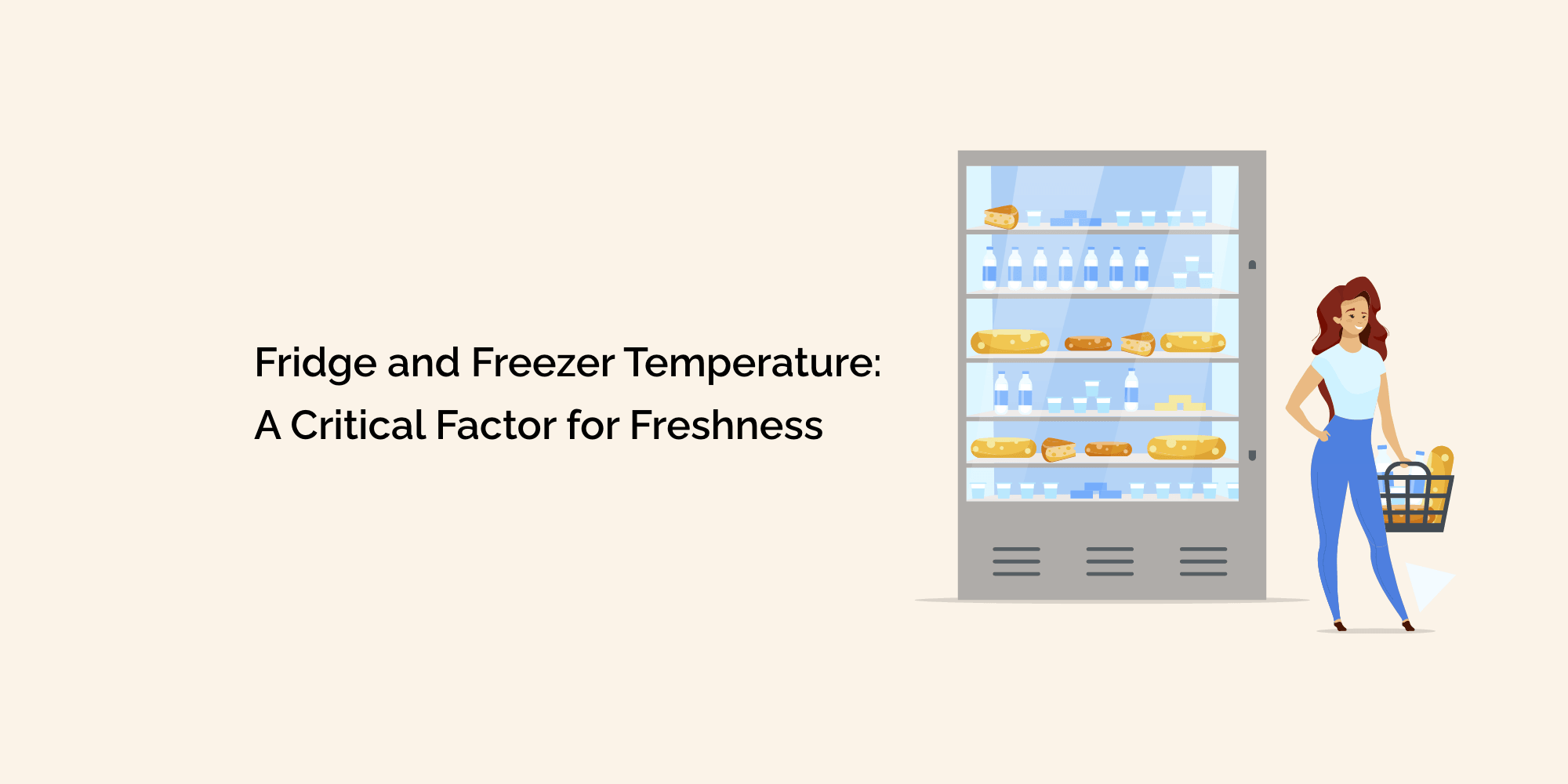When it comes to food storage, maintaining the right temperature is a critical factor for freshness and safety. Your refrigerator and freezer are essential appliances designed to keep your food at optimal temperatures, preserving their quality and preventing spoilage.
In this comprehensive guide, we'll explore the importance of fridge and freezer temperatures, how they impact your food, and why maintaining the correct settings is crucial for food safety.
1: The Refrigerator's Role
1.1 The Refrigerator's Purpose
Begin by explaining the primary role of a refrigerator, which is to slow down bacterial growth and extend the shelf life of perishable foods. The fridge creates a cold environment that inhibits the proliferation of harmful bacteria.
1.2 Ideal Refrigerator Temperature
Highlight that the ideal temperature for a refrigerator is typically between 34°F to 40°F (1°C to 4.4°C). This temperature range is just above freezing and is ideal for maintaining the freshness and safety of foods like fruits, vegetables, dairy products, and leftovers.
1.3 Importance of Consistent Temperature
Emphasize the significance of maintaining a consistent temperature within the refrigerator. Fluctuations in temperature can promote bacterial growth and compromise food quality.
2: Freezer Temperature and Its Purpose
2.1 Freezer's Primary Function
Discuss how the freezer's primary function is to freeze and store food items at extremely low temperatures, preserving them for an extended period. The cold temperatures in the freezer halt bacterial growth and enzymatic activity.
2.2 Ideal Freezer Temperature
Explain that the freezer temperature should be set at 0°F (-18°C) or lower. These frigid temperatures keep food items in suspended animation, preventing spoilage and freezer burn.
2.3 Role in Long-Term Storage
Highlight the role of the freezer in long-term food storage. It allows you to store surplus items, meats, and prepared meals for months or even years, reducing food waste.
3: Food Safety and Temperature Control
3.1 Food Safety Concerns
Discuss the food safety concerns associated with incorrect temperature settings. Explain that bacteria can multiply rapidly in the "danger zone," which is between 40°F (4.4°C) and 140°F (60°C), potentially leading to foodborne illnesses.
3.2 Bacterial Growth
Explain how bacterial growth is significantly slowed in the refrigerator's cold environment and virtually halted in the freezer's sub-zero temperatures.
3.3 The Risk of Thawing
Discuss the importance of proper thawing techniques, such as thawing frozen items in the refrigerator rather than at room temperature, to prevent bacterial growth.
4: Impact on Food Quality
4.1 Fresher and Longer-Lasting Produce
Describe how maintaining the correct fridge and freezer temperatures keeps fruits and vegetables fresher for longer, reducing food waste.
4.2 Preventing Freezer Burn
Explain how freezer burn occurs when food is improperly packaged or stored in the freezer. Proper freezer temperature and packaging can prevent this common issue, preserving food quality.
4.3 Taste and Texture Preservation
Discuss how maintaining the right temperatures in both the fridge and freezer helps preserve the taste, texture, and overall quality of food items.
5: Monitoring and Maintenance
5.1 Regular Temperature Monitoring
Encourage readers to use reliable thermometers to monitor the temperature of their refrigerator and freezer regularly. Explain that this practice ensures the appliances are operating within safe temperature ranges.
5.2 Maintenance Tips
Offer practical maintenance tips for both refrigerators and freezers, such as cleaning coils, checking door seals, and organizing items to optimize airflow and efficiency.
6: Sustainability and Energy Efficiency
6.1 Energy Savings
Discuss how maintaining the correct fridge and freezer temperatures not only benefits food preservation but also leads to energy savings. Proper temperature settings help appliances operate efficiently.
6.2 Reducing Food Waste
Highlight how food preservation through temperature control reduces food waste, contributing to a more sustainable and eco-friendly kitchen.
7: Conclusion:
Temperature Mastery for Food Freshness
In conclusion, understanding and controlling the temperature of your refrigerator and freezer are crucial for food freshness, safety, and quality. By maintaining the right settings, regularly monitoring temperatures, and adopting proper food storage techniques, you can extend the shelf life of your groceries, reduce food waste, and ensure that your meals are not only safe but also delicious.
Proper temperature management is not only a culinary practice but also an environmentally responsible one, as it contributes to energy efficiency and sustainability in your household. Make temperature mastery a fundamental part of your food storage routine, and you'll enjoy fresher, safer meals while minimizing your impact on the planet.








